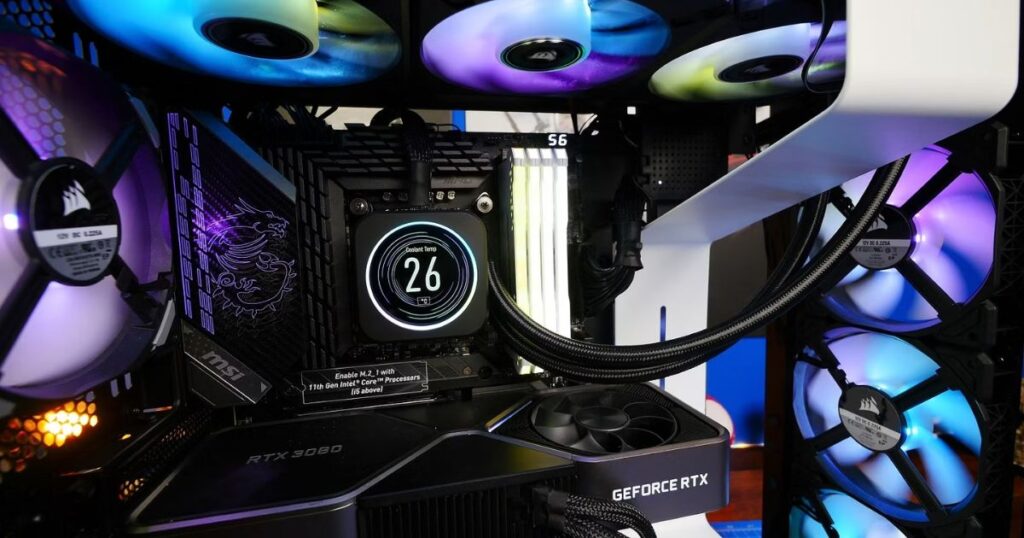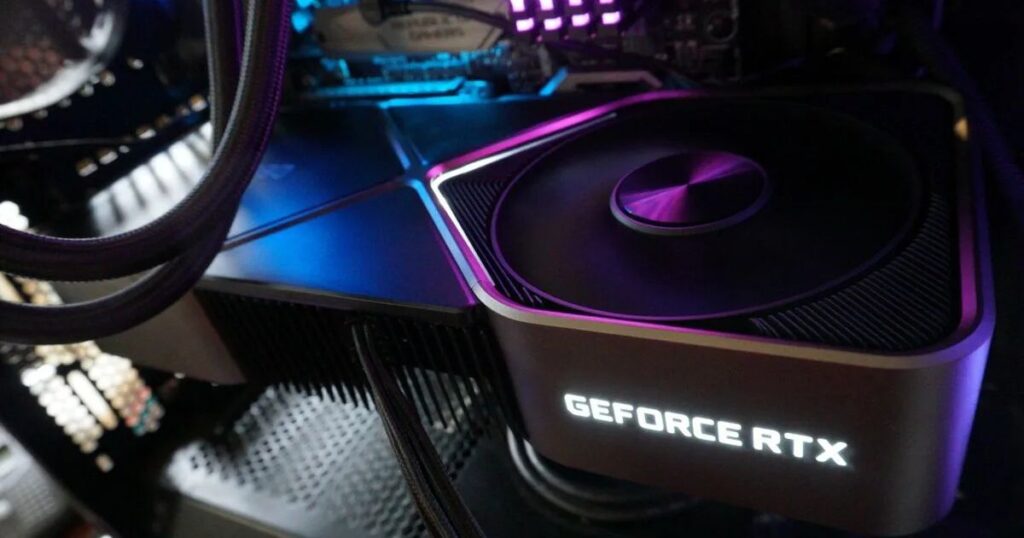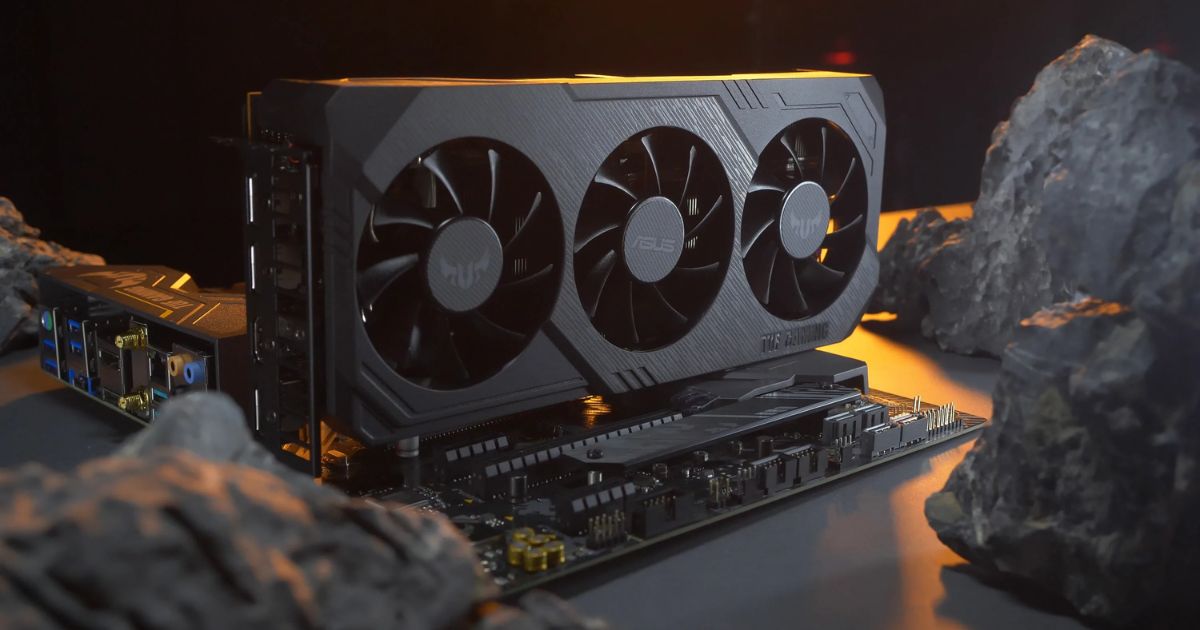Maintaining optimal temperatures is important for your computer’s performance and longevity while gaming. But what are considered normal and ideal CPU and GPU temperatures? This article answers common questions about temperature thresholds and provides tips to monitor and manage heat levels for smoother gameplay.
From tracking real-time readings to basic maintenance, learning about thermal management will help maximize your hardware’s potential. We’ll explore normal temperature ranges, factors affecting heat, and strategies like overclocking that either raise or reduce temperatures. By the end, you’ll know exactly what’s needed to keep components running cool, and calm under pressure.
Each topic includes specific facts and detailed explanations. Graphics accompany some sections to illustrate concepts visually. Whether you’re new to PC gaming or a seasoned enthusiast, the comprehensive thermal guidelines and advice here apply to any system. Let’s dive into the science behind optimal CPU and GPU temperatures!
What is a normal CPU & GPU temperature for gaming?

Most CPUs are designed to operate safely between 30-100°C/86-212°F. GPUs tend to run a bit hotter, with normal temps of 30-85°C/86-185°F. Exact thresholds depend on the component and cooling solution. Within these ranges, performance remains stable. Minor temperature fluctuations are normal during intensive games as loads ebb and flow. However, sustained readings approaching the high-end warrant concern and potential troubleshooting to avoid unwanted throttling or component damage.
Temperature monitoring software lets you examine CPU and GPU loads and ensure ideal operation. Keeping both cores within 10-15°C/18-27°F of average during gameplay maintains longevity without overwork. Factors like fans, dust, overclocks and case airflow influence actual results, discussed later. With proper setup, most stock systems game smoothly below 80°C/176°F.
What is the optimal CPU temperature while gaming?
The optimal CPU temperature range for consistent gaming performance is between 40-75°C/104-167°F. Anything below keeps cooling overhead while avoiding undue stress on components. Processor loads fluctuate drastically between cores in games, so monitoring individual threads pinpoints hotspots needing attention.
CPUs equipped with effective cooling like substantial heatsinks and multiple fans generally operate 10-20°C/18-36°F cooler than air-only setups. Water cooling pushes several degrees lower still. For stock-cooled Intel and AMD chips, optimal gaming temps hover around 60°C/140°F or below on average after extended sessions. Higher-end overclocked models edge closer to 70-75°C/158-167°F before risking stability. Either way, keeping beneath 80°C/176°F prevents unwanted throttling under pressure.
What is the optimal GPU temperature while gaming?
Most discrete GPUs favor temperatures under 75-80°C/167-176°F for silent, stable operation. This “golden range” ensures longevity without sacrificing performance headroom. Thankfully, advancements in cooling solutions have brought average high-load GPU temps down significantly.
Well-ventilated cases partnered with dual or triple fan graphics cards commonly stay 10-15°C/18-27°F cooler during gameplay. Mid-range models average 60-70°C/140-158°F, while premium boards with beefier heatsinks and airflow keep things under 65°C/149°F. Overclocking pushes limits further to 75-80°C/167-176°F before throttling kicks in. Monitor junction temps too for hybrid/water-cooled GPUs. Overall, keep things below 85°C/185°F for worry-free gaming.
Factors that influence GPU temperature
- GPU model (cooling design, power limits)
- Case airflow & fans
- Ambient temperature
- Overclocking settings
- Thermal paste & heatsinks
- Dust buildup over time
- Cable management and clutter
How to track your CPU/GPU temperature when gaming?
The simplest way is through monitoring software displayed on a second screen. Popular free options like MSI Afterburner, HWInfo, and NZXT Cam show temps, usage, and fan speeds in real time. These overlay performance stats on-screen during gameplay for easy access.
Some motherboards and graphics cards include temperature sensors in BIOS/firmware for manual checks too. Thermal probes plugged directly into headers offer high-precision logs for detailed benchmarking. More advanced programs control fan curves to actively address heating issues.
Regardless of the method, temperatures should remain stable within optimal ranges under prolonged, intensive loads. Check temperatures at regular intervals, especially after hardware or case changes that could impact cooling. Corrective action isn’t usually needed unless sustained readings near or exceeding maximums appear regularly during gaming.
How to deal with high CPU and GPU temperatures?
The most common culprits for high component heat are dust buildup inhibiting airflow and suboptimal cooling setups struggling under heavy loads. Improving circulation treats the root cause. Start with compressed air cleaning heatsinks, fans, and radiators monthly to clear blockages. Checking thermal paste application/conditioning every 1-2 years optimizes heat transfer too.
Poor cable routing congesting fan intakes also reduces efficiency. Reorganizing wires neatly out of the way streamlines ventilation. The lack of intake/exhaust fans creates pressure issues as well. Determine airflow paths and supplement with additional static or PWM units as needed. Ambient temperature management also helps – place the PC in open areas and consider nearby air conditioning.
As a last resort, stress testing may find faulty cooling hardware. Replacing problem fans or updating heatsinks restores full thermal potential. With diligent maintenance, optimal CPU and GPU temperatures remain within easy reach.
Dust
- Accumulates over time on heatsinks/fans restricting airflow
- Reduces cooling performance by up to 10°C if neglected
- Requires monthly cleaning with compressed air to dislodge it
Poor cable management
- Excess cables block intake vents limiting fresh air flow
- Routing them neatly out of fan paths with cable ties streamlines airflow
- Improves circulation and reduces temps by 3-5°C
Poor airflow or lack of fans
- No intake/exhaust airflow creates negative pressure issues
- Fans should exceed a 1:1 intake-to-exhaust ratio for positive air balance
- Adding 1-2 extra fans where needed boosts temps by 5-10°C
High ambient temperature
- Room temperature directly translates to internal PC heat
- Every 1°C reduction in ambient cuts component temps slightly
- Air conditioners or portable fans ventilate hot areas effectively
Change thermal paste
- Thermal compound efficiency declines after 1-2 years of use
- Replace it during regular maintenance to restore heat conduction
- Can lower CPU/GPU temps up to 5°C right away
Overclocking
While raising clock speeds enhances performance, overclocking also increases heat production. Cooling headroom determines safe voltage/frequency limits. Mild factory-level boosts generally stay within optimal thermal thresholds. Higher manual overclocks push temperatures closer to comfort levels. Though testing stability at the edge optimizes performance, sustained usage much past 80°C stresses components unnecessarily over time.
Dedicated water cooling enables greater overclock potential by keeping temperatures 8-12°C lower than air coolers. However, fans/radiators must still expel heat effectively. Monitoring temperatures closely during overclocking validates cooling capability. Without sufficient ventilation headroom validated via testing, heat builds up risking instability or damage under synthetic/gaming loads. Thermal management remains essential for safe, long-term overclocked operation.
Do high CPU/ GPU temps affect lifespan?

Yes, prolonged exposure to elevated temperatures shortens component longevity over several years of use. Semiconductor lifespans approximately halve for every 10°C/18°F increase over optimal operational levels. Remaining within or below manufacturer-recommended maximums extends lifespan significantly.
Running consistently 5-10°C/9-18°F over the recommended limit halves CPU/GPU lifespan. Exceeding by 15°C+/27°F risks damaging sensitive components much sooner through accelerated silicon degradation. A GPU lifespan declines from 10-12 years at 60°C to just 3-5 years at 80°C for example. Investing in proper airflow and thermal monitoring protects investments and ensures smooth performance for longer. With diligent maintenance, components comfortably meet or exceed warranty lifespans under normal conditions.
Frequently Ask Questions
Is 70 Degrees too hot for a CPU?
No, 70 degrees Celsius is within the typical safe temperature range for most CPUs under load. Most can operate reliably up to 80C.
Is 90c safe for the CPU?
90C is getting quite hot and risks potential damage over time. Most experts recommend keeping CPU temps under 80C for optimal lifespan. Short spikes to 90C may be okay but long-term use at that level isn’t recommended.
Is 80C too hot for GPU?
80C is on the warm side but usually acceptable for most GPUs under heavy gaming loads as long as it doesn’t exceed that level consistently. For longer-term use, aiming to keep the GPU below 75-77C is preferable.
What should my CPU and GPU temps be when gaming?
For optimal performance and longevity, most experts recommend:
- CPU temperature between 40-70C
- GPU temperature between 60-75C
Staying within these ranges helps ensure components run reliably without throttling over extended periods.
Conclusion
In conclusion, keeping CPU and GPU temperatures within optimal ranges plays a key role in maximizing gaming PC longevity and performance over many years of intense use. By understanding normal temperature thresholds, monitoring readings regularly, and addressing common causes of elevated heat through basic preventative maintenance, costly component failures can largely be avoided. With some mindful thermal management practices integrated into regular care routines, hardware can endure intense titles for far longer before needing upgrades or replacements down the line.
Overall, learning to track and interpret temperature outputs empowers gamers to proactively spot potential issues and troubleshoot before damage occurs. A small time investment prevents far greater losses from degraded or failed components later on. By maintaining reasonable thermal headroom, PC builders and enthusiasts can ensure consistent, dependable frame rates across their entire game libraries now and into the future. With optimal cooling handled, you’ll remain focused on the fun of dominating opponents without distractions from overheating worries.











